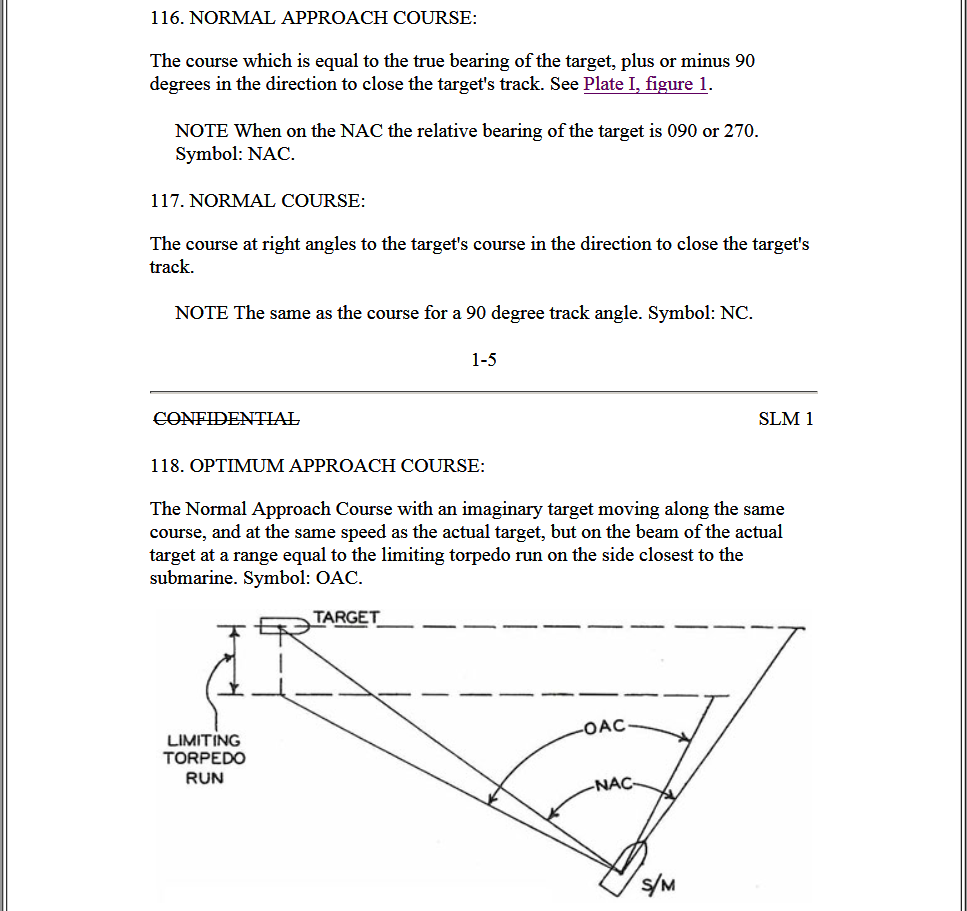 04-28-14, 01:49 AM
04-28-14, 01:49 AM
|
#13
|
Silent Hunter 
Join Date: Sep 2010
Posts: 3,975
Downloads: 153
Uploads: 11
|

Quote:
Originally Posted by AdamMil

Especially if you're submerged and your "fuel" is battery charge.
|
Yes. The Normal Approach Course was mainly something applied to submerged approaches.
Here is a quote from the 1950 Submarine Fire Control Manual, which speaks for itself:
Quote:
310. FLEET TYPE SUBMARINE:
(a) The Fleet Type Submarine will make the following speeds submerged for the length of time indicated, if it starts with a full battery charge:
Knots Time
3.0 48 hours
6.0 3 hours
8.0 1 hour
9.0 1/2 hour
(b) Thus it can readily be seen that a major consideration when making an approach is conservation of the battery capacity.
|
If you have liberty to maneuver on the surface, you have much better speed, and many more options, to make an approach.
If the people who own the convoy, have aircraft out flying ahead (as they often did), then surface maneuvers become problematic. It occurs to me, that aircraft make a convoy much more secure. They don't need to even make attacks; their mere presence would hold down submarines and frustrate attacks.
Also, I didn't mean to imply the NAC is some kind of rigid method. You don't need to adjust speed to the minimum, or follow any specific plan. You could increase speed for a short time to gain bearing (and a better position), then reduce speed when you know you are close enough to the target track to be assured of getting an attack opportunity.
Often, a NAC would be taken when a target was first spotted, and later when they were within several thousand yards, change course and speed to meet tactical requirements.
I like the Normal Approach Course, because it has that elegant combination of simplicity and effectiveness. However, the Navy also had what they called the Optimum Approach Course:
 I've never really used the OAC, but I've certainly used the NAC many times.
|

|

|